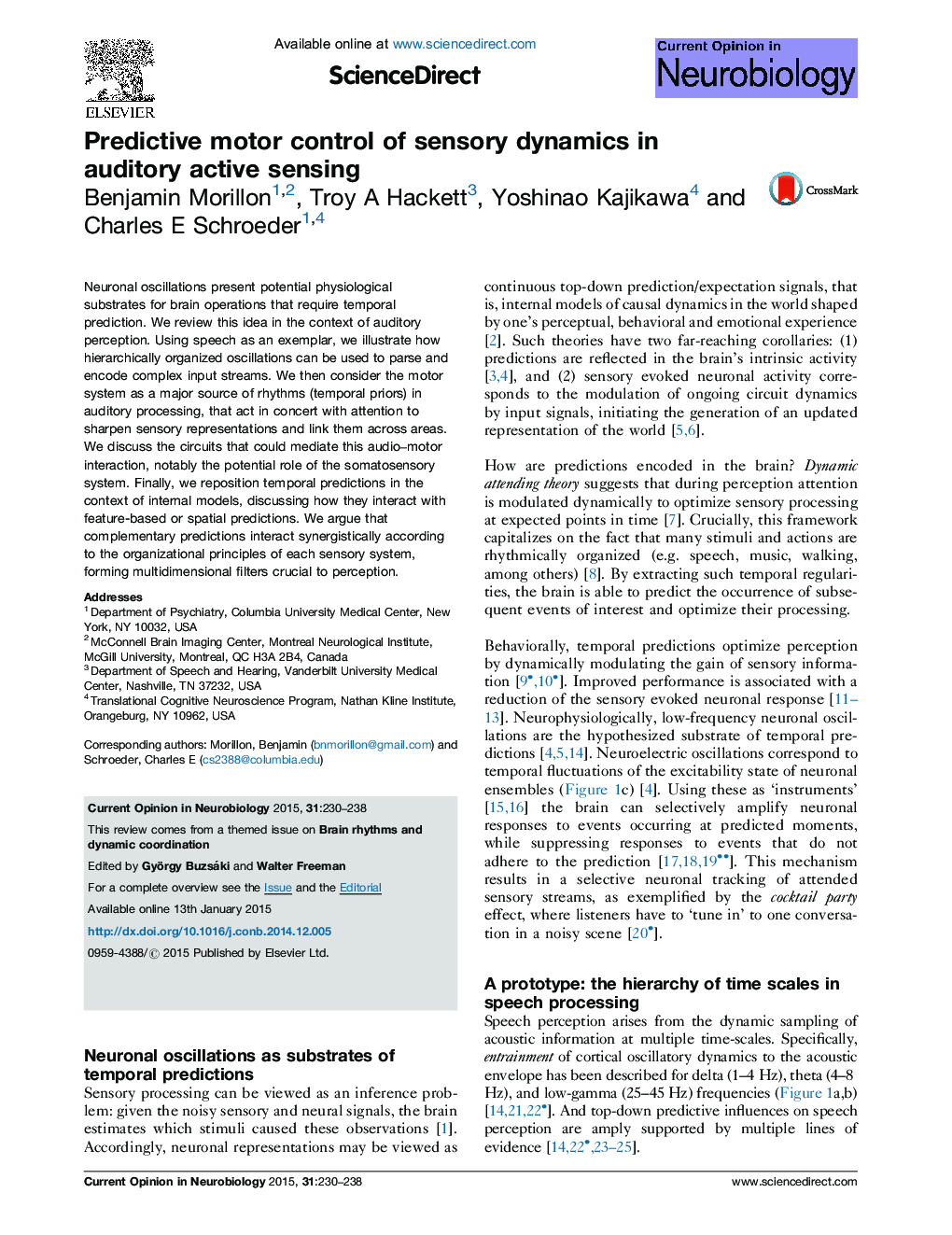| Article ID | Journal | Published Year | Pages | File Type |
|---|---|---|---|---|
| 6266249 | Current Opinion in Neurobiology | 2015 | 9 Pages |
â¢Active sensing entails prediction.â¢Motor systems generate temporal predictions in active sensing.â¢Motor-derived oscillatory rhythms can underpin temporal prediction in auditory processing.
Neuronal oscillations present potential physiological substrates for brain operations that require temporal prediction. We review this idea in the context of auditory perception. Using speech as an exemplar, we illustrate how hierarchically organized oscillations can be used to parse and encode complex input streams. We then consider the motor system as a major source of rhythms (temporal priors) in auditory processing, that act in concert with attention to sharpen sensory representations and link them across areas. We discuss the circuits that could mediate this audio-motor interaction, notably the potential role of the somatosensory system. Finally, we reposition temporal predictions in the context of internal models, discussing how they interact with feature-based or spatial predictions. We argue that complementary predictions interact synergistically according to the organizational principles of each sensory system, forming multidimensional filters crucial to perception.
